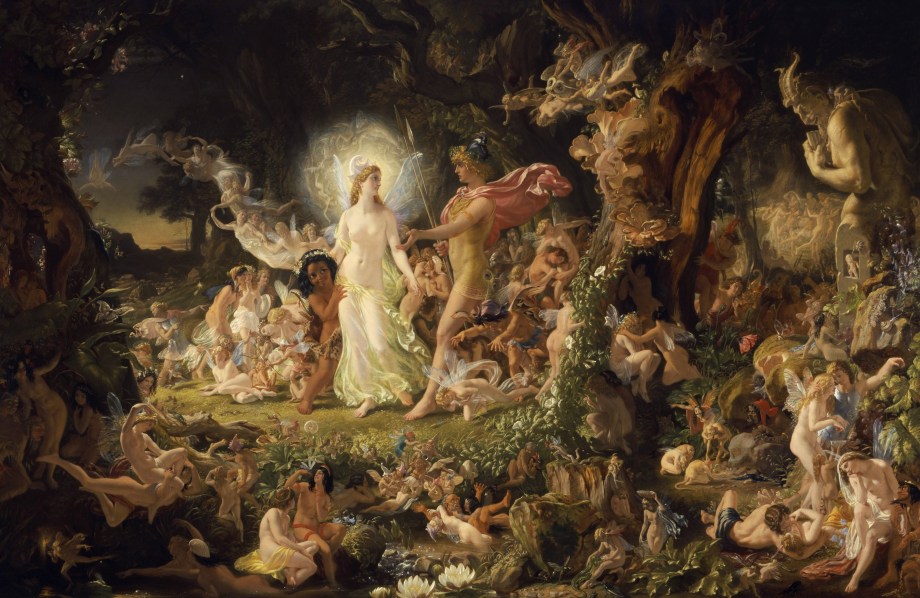Ballet in one act
Music by Felix Mendelssohn and Cesare Pugni
World Première
30th November [O.S. 18th November] 1866
Palace of the Grand Duchess Elena Pavlovna
Original 1866 Cast
Titania
Maria Surovshchikova-Petipa
Oberon
Marius Petipa

History
William Shakespeare wrote his play A Midsummer Night’s Dream between 1595 and 1596. The play premièred on the 1st January 1601 at the Globe Theatre in London, portraying the events surrounding the marriage of Theseus, Duke of Athens, to Hippolyta, former Queen of the Amazons. The play centres around the love rectangle between Hermia, Lysander, Helena and Demetrius, who flee into the Fairyland of Oberon and Titania, only to have their problems be made more complicated by the mischievous Puck. Since its première, A Midsummer Night’s Dream has become one of Shakespeare’s most popular works and has been the subject of various adaptations in music, literature, art, film and dance.
In 1826, Felix Mendelssohn composed his A Midsummer Night’s Dream Concert Overture, the first of his two music pieces inspired by the play. The Overture premièred on the 20th February in Stettin, Prussia (now Szczecin, Poland). Sixteen years later, Mendelssohn composed his A Midsummer Night’s Dream Incidental Music for a full-length staging of the play on commission from King Frederick William IV of Prussia, who had been thoroughly impressed by Mendelssohn’s other incidental music compositions for other plays that had been staged at his palace in German translation. For the Incidental Music, Mendelssohn incorporated his Overture and composed the world-famous Wedding March, which is often used today at weddings. The new production of A Midsummer Night’s Dream was staged at the New Palace in Potsdam on the 14th October 1843.

Titania was a choreographic miniature that Petipa created for a gala performance held at the Palace of the Grand Duchess Elena Pavlovna on the 30th November [O.S. 18th November] 1866 to celebrate the engagement of Tsarevitch Alexander (the future Tsar Alexander III) and Princess Dagmar of Denmark (the future Tsarina Maria Feodorovna). This was perhaps the first ballet adaptation of Shakespeare’s fairy play with the use of Mendelssohn’s Incidental Music. It was also Petipa’s first adaptation of the play with Mendelssohn’s music, which was arranged by Cesare Pugni. Ten years later, he would use Mendelssohn’s music again to stage another production of A Midsummer Night’s Dream for the Imperial Ballet. It is important to note that Mendelssohn did not compose for the whole play, but rather for the play’s fairyland, a contrast to the likes of Sergei Prokofiev, who, years later, composed a full-length ballet score for Shakespeare’s Romeo and Juliet. Therefore, Mendelssohn’s music seems to have limited what Petipa could adapt from the play as both his adaptations focused on the fairyland of Oberon and Titania rather than the play’s full story line.
Circumstances surrounding the creation and première of Titania, however, were very grim. Maria Surovshchikova-Petipa and Petipa himself were cast as Titania and Oberon, which must have been very difficult for them both since their marriage was in crisis and coming to an end. To add to that, according to several writers, Maria’s technical limitations had caught up with her and were holding back Petipa’s choreographic ambitions. Titania would be the final ballet that Petipa created for Maria, for the couple went their separate ways around the time of the ballet’s première. Titania marked the end of an era in Petipa’s private life and his career; his professional and private marriage with his first wife and muse was over and a new chapter in his journey was to begin.
Sources
- Meisner, Nadine (2019) Marius Petipa, The Emperor’s Ballet Master. New York City, US: Oxford University Press
